Did you know that it’s possible to dissolve an eggshell from an egg, enlarge the egg a little a bit, and make it bouncy (without hard-boiling)…all with a simple experiment? I had absolutely no idea that you could manipulate a raw egg in such a manner…at least, not until we conducted The Great Vinegar Eggsperiment!
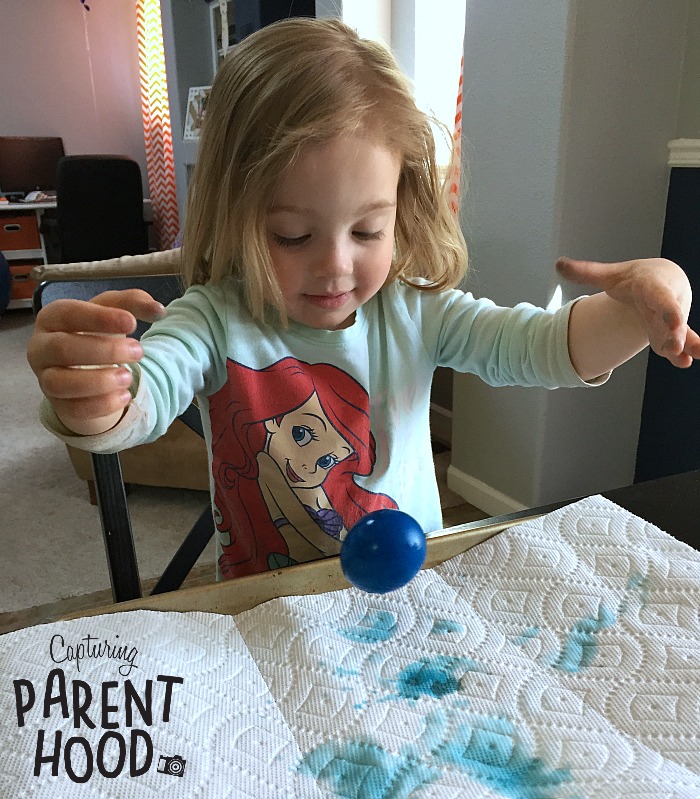
This amazingly cool science experiment is incredibly easy to setup, and it only requires two ingredients (that you likely already have in your kitchen). All you need is vinegar and eggs (and some glasses or jars to contain them) – that’s it! You can also add a bit of food coloring, to jazz things up a little bit more.
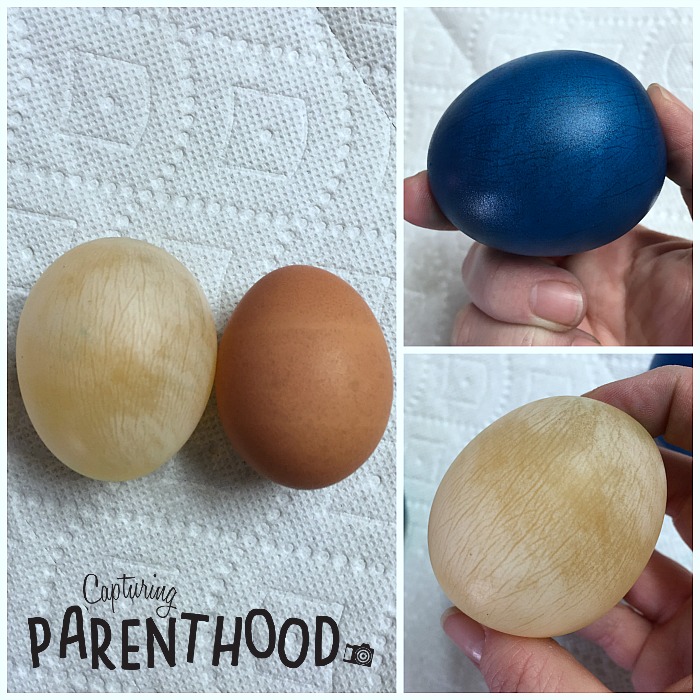
While the setup is simple, this experiment does require a bit of patience…it takes approximately 48 hours for the eggs to transform. That being said, the extra wait is totally worth it! Once you rinse the remaining eggshell remnants from your eggs, and realize that you are actually holding a fully-contained raw egg in your hand…you won’t be able to hide your excitement and sense of childlike wonder! It could easily be said that I was more enthralled with this experiment than our little nugget, although she thoroughly enjoyed eggsploring all the magic that eggs have to offer.
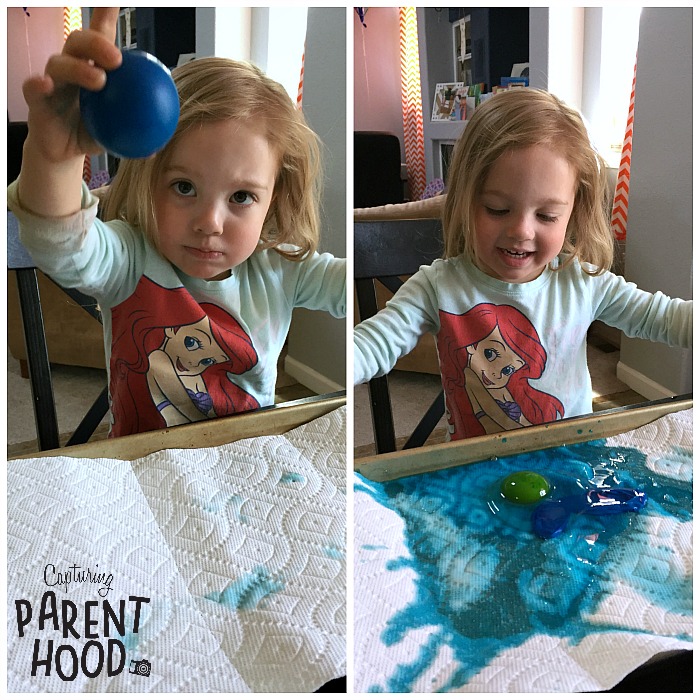
I still can’t believe how squeezable and squishy the shell-less eggs really are, or how much bigger they become, compared to their original size. Perhaps the most astonishing result of this little experiment, is the fact that the eggs take on a rubber-like quality, making them bouncy! Now, when I say bouncy, I don’t mean that you can drop the egg from arm-height and watch it bounce all over the floor (like a bouncy ball). But…you can drop it several inches above a flat surface, and it will in fact bounce. Part of the experimental fun, at least for us, was testing just how high we could drop the egg before the membrane finally broke and the yolk came spilling out! We determined that if you drop the egg anywhere above 8-10 inches, you’re in for a bit of a mess. 🙂 A fun mess, no less!
Speaking of which, I should probably add a little word of warning – when you drop your egg, it could unexpectedly bounce right off of the table, as witnessed in the video below:
In all honestly, we have probably watched this video more than a hundred times. And we all laugh out loud, each and every time! So, just to be clear, messes can most certainly be made with this eggsperiment, but they are always easy to clean up. And you never know…you just might get a funny blooper video out of it too. 🙂
The Great Vinegar Eggsperiment
Supplies:
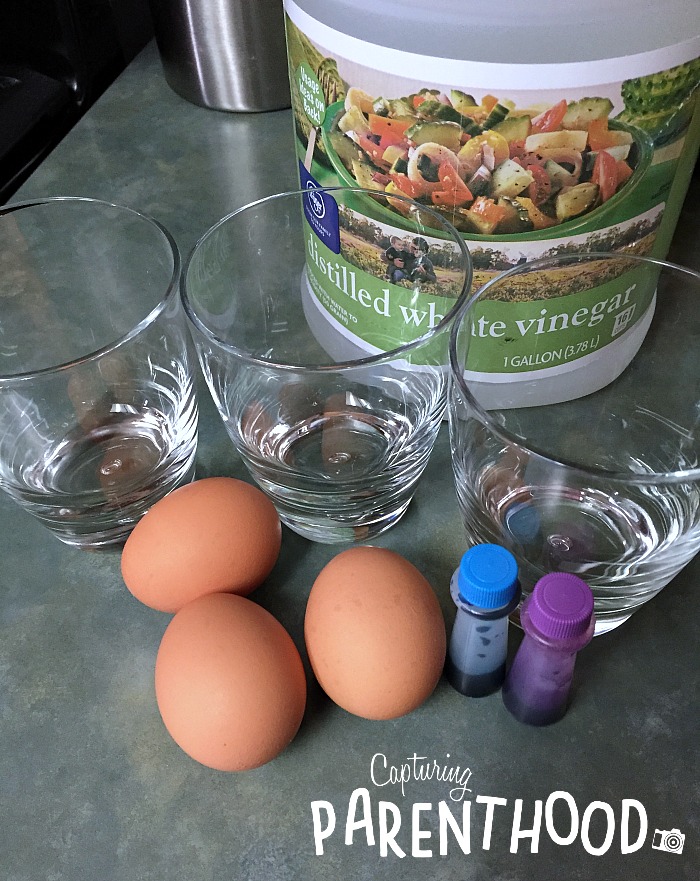
- Distilled White Vinegar
- Small Drinking Glasses/Jars
- Eggs
- Food Coloring (optional)
Instructions:
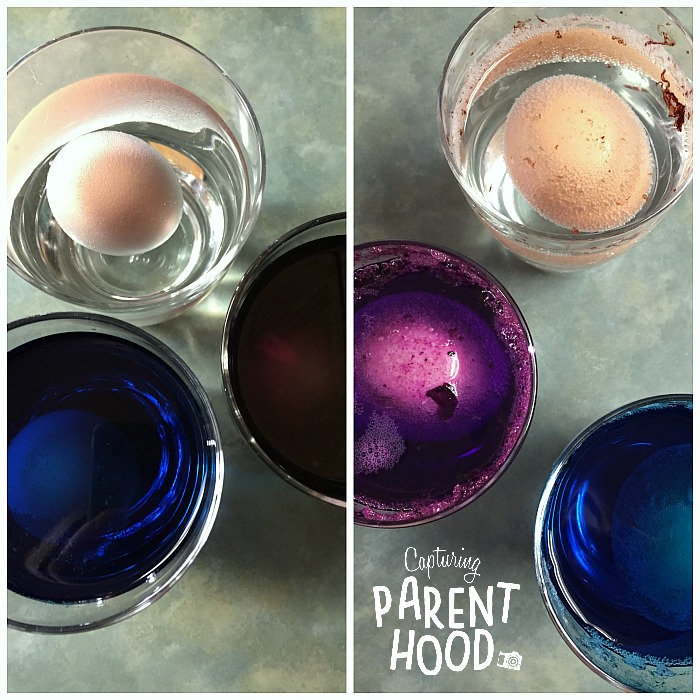
- Start by filling the glasses/jars with vinegar. You will need one glass, per egg. If you would also like to experiment with dying the egg membranes a different color…feel free to add a few drops of food coloring to the glasses of vinegar. We kept one glass clear, dyed one blue, and the last one purple.
- Carefully add an egg to each glass.
- Set aside for approximately 48 hours. I’m not a huge fan of filling my house with the smell of vinegar, so I covered each of our glasses with plastic wrap, to reduce the odor.
- Once the eggs have been sitting in the vinegar for two days, bring them over to the kitchen sink. Gently pour an egg into your hand. There may still be a few particles of eggshell stuck on the egg. If you run the egg under cold water, while gently rubbing the exterior with your fingertips, you will remove any remnants of the original eggshell. Set the egg down on a paper towel. Repeat the process for the remaining eggs.
- Once all of your eggs have been rinsed, grab a tray (or cookie sheet) and let the fun begin! 🙂
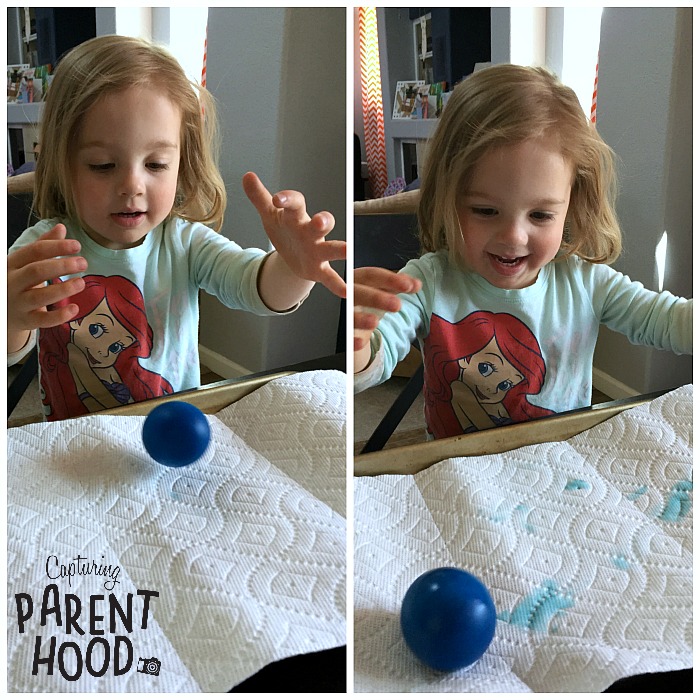
Before I handed our daughter one of the shell-less eggs to explore, we sat down to examine a normal raw egg. I wanted her to hold a standard egg…to feel the hardness of the shell…to judge its size. I asked her if she thought it would bounce if she dropped it…and then we tested her hypothesis. As you already know, it did not bounce. The eggshell cracked open and the egg started seeping out. Exploring and examining a raw egg is fun, in and of itself!
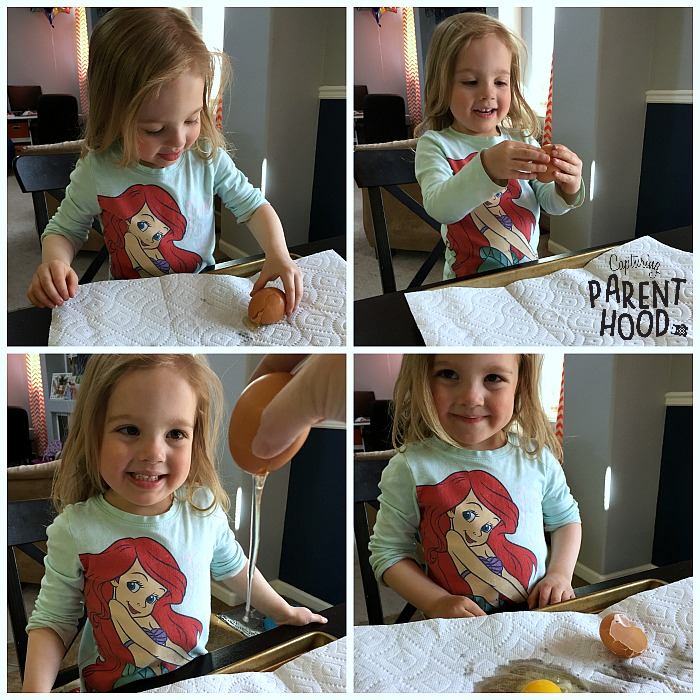
Once we had tired of playing with our raw egg, it was time to check out our shell-less vinegar eggs! The colored eggs were definitely a highlight with our little nugget, even though our purple egg had turned a shade of blue.
By now, you may be wondering how all of this really works. What’s the scientific explanation? Well, when the eggs are in the vinegar, you will notice small bubbles forming on the eggshell. The bubbles are carbon dioxide. The carbon dioxide is a result of the reaction between the vinegar (acetic acid), and the eggshell (calcium carbonate). Carbon dioxide is not the only product of the reaction, calcium acetate and water are also created. With the calcium carbonate depleted, what remains is a thin, translucent layer called the semipermeable membrane.

How do the eggs grow larger in size? The white vinegar that you buy from the grocery store is typically made up of 4% acetic acid, and 96% water. The eggs grow in the vinegar, because the water in the white vinegar can travel through the egg’s membrane. The water moves through the semipermeable membrane in order to equalize the concentration of water on both sides of the membrane. This process is called osmosis.
Did you know that if you placed your vinegar egg into a glass full of corn syrup, that the egg would shrink and shrivel? Corn syrup has a lower concentration of water, so in order to create a balance in water concentration, water would be drawn out of the egg membrane and into the corn syrup. Seriously, science is SO cool!
Have you tried this vinegar eggsperiment with your kiddos before? Were they amazed? Were you? I think this will most certainly be one of those experiments that we repeat!




